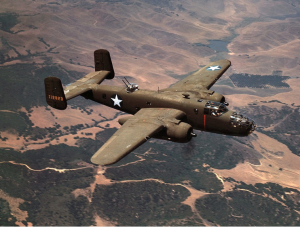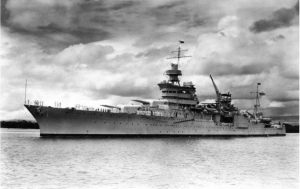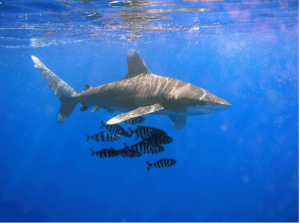SciTech Tuesday: This day in history–Closing out Shark Week
This is a very busy day in history. On this day:
In 1812, the USS Constitution fought the battle that gave it the name ‘Old Ironsides.’ In World War II, boats (including the Higgins landing craft and the PT boats) were still made of dense woods.
In 1839, the French Academy of Sciences heard a report by Louis Jacques Mandé Daguerre about a photographic process that came to be named after its inventor—the Daguerrotype. Photographic techniques developed quickly over the next 100 years, and the wide use and distribution of photos really shaped the cultural impact of World War II. Some of the world’s most iconic images came from that war, and were influential in building support for the war at in homes and towns far from the from lines.
In 1871, Orville Wright was born. Forty five years later, airplanes were involved in World War I, and less that seventy years after his birth airplanes were one of the most important parts of World War II. Orville Wright died in 1948 so he saw these developments in his lifetime.

A test flight of the B-25 over southern California.
In 1940, the B-25 Bomber took its first flight. The B-25 saw extensive use in World War II, and 10,000 were made during its production history.
In 1942, the Allies made a failed attempt to invade France. The Battle of Dieppe provided valuable lessons used later in the Normandy Invasion on D-Day. These lessons included the importance of embarkation and disembarkation craft, and the ability to get armored vehicles onto shore. Air support was also a failure of the Dieppe invasion, and became an emphasis for the later, successful, invasion. This makes clear the importance of the Higgins boats for the success of D-Day.
In 1944, the Liberation of Paris began. After several days of a general strike, the German forces began to meet resistance from the citizens of Paris. With news of the Allies on the way to Paris, some troops and assets began to make their way out of the city. But before leaving the Germans made some attempts to weaken the city. Hitler had given orders to destroy the city before retreating—orders that were not followed. However, they did set a barge of mines afloat in the Seine which destroyed most of an assembly of windmills in Pantin, a northern suburb of Paris that provided power to mills and industry for the city of Paris.
Closing out Shark Week
Finally, last week was Shark Week. Many in the scientific community regard Shark Week with ambivalence—sharks are fascinating creatures, and important parts of ocean ecosystems, so it is great to give them some attention. However, sharks are threatened by fishing practices, climate change, and habitat change, and much of the media attention to them is hyperbolic and might lead to more fear than understanding. One of the biggest shark attacks in human history is an example of this difficult mix of misunderstanding, fear, and science.

The USS Indianapolis in harbor
In late July of 1945, the USS Indianapolis was on a secret mission to carry parts for the atomic bomb Little Boy to an air base in Tinian. Due to the secrecy of the mission, the cruiser was unescorted. Reaching Tinian on the 26th of July, the Indianapolis headed to Guam for supplies and crew changes, and then was moving towards the Philippines. On the way to the Philippines the ship was hit by torpedoes from a Japanese submarine. Within just a few minutes of being struck the ship sank, taking about 300 of its crew of almost 1200 down with it. The remaining 900 were in the sea with few lifeboats or lifejackets. Naval command was unaware of the sinking of the ship until a routine patrol flight spotted survivors in the sea three and a half days later. Much of the crew succumbed to hypothermia, hunger, and dehydration. Much was made in the aftermath, and since, of shark attacks. 317 men survived, leaving almost 600 more who died awaiting rescue.

An oceanic white-tipped shark with pilot fish. Note the long fins and tail.
Two important points about the sharks. First, the reports of sharks taking live survivors may be overstated. It is likely that they were drawn to the site and began a feeding frenzy soon after the sinking. Second, the sharks involved were likely to have been oceanic white-tipped sharks (Carcharhinus longimanus), not great whites (Carcharodon carcharias). The two are in very different shark families, and are not closely related. Great whites are generally restricted to coastal areas of temperate waters. Oceanic white-tipped sharks (avg 3 m)are smaller tha great whites (avg 4-5 m) and much different in shape. They are less familiar to us because they are restricted to deep waters, but most deaths of shipwreck victims in the open ocean are from these sharks, which are thinner and have much longer tail and pectoral fins than great whites. Oceanic white tipped sharks have been known as ship followers to sailors as far back as the 16th century. They tend to be solitary and slow-moving, but when drawn to a common food source they will enter a feeding frenzy. They tend to be scavengers more than hunters. White tipped sharks give birth to live offspring after a gestation of one year and are frequently fished for their fins. They often follow schools of large fish like tuna, and so are caught along with them.
Posted by Rob Wallace, STEM Education Coordinator at The National WWII Museum.
all images from Wikipedia and Wikimedia Commons




Leave a Reply